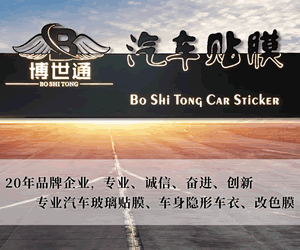阿根廷货币名称为比索。80年代后半期,阿根廷靠印刷钞票弥补财政赤字,出现了恶性通货膨胀。梅内姆政府执政期间,为遏制通货膨胀,将本国货币比索与美元挂钩,采取比索与美元1比1的固定汇率制度。德拉鲁阿上台以后,沿用了这种固定汇率制度。机械地实行这种汇率制度虽使通货膨胀得到了控制,但也付出了高昂的代价。随着经济全球化趋势的发展,维系阿根廷比索的美元价格急剧增长,比索的币值因而也远远高于其实际价值,从而大大削弱了阿根廷出口产品的竞争力,随之而来的是国内失业率大幅增长。
阿根廷比索识别
1、纸币各面额正面图案均突出人像。
2、纸币各面额规格均相同,154mm*65mm。
3、纸币各面额背面图案多为建筑物。
4、硬币均为圆形,1比索为两个同心圆,正面中间有国徽。
阿根廷比索制造工艺
1、钞票纸内潜埋有红、绿、蓝彩色纤维和无色荧光纤维,在紫外光下呈现黄色荧光。另有满版八角星水印。
2、各钞采用单色或三色雕刻凹版油墨印刷,富有接线、对印、套印图案。
3、票面上还具有光变油墨、钢印图案。
Monetary History of Argentina
At the beginning of the 20th century, the Argentine peso was one of the most traded currencies in the world. However, throughout the century, the economy collapsed several times, and the country experienced periods of inflation and hyperinflation that led to changes in the system.
Peso before 1826
The peso was a name often used for the silver Spanish 8 reales coin. Following Independence, Argentina began issuing its own coins, denominated in reales, soles and escudos, including silver 8 reales coins still known as pesos. These coins, together with those from neighbouring countries, circulated until 1881.
Peso Fuerte 1826–1881
In 1826, two paper money issues began, denominated in pesos. One, the peso fuerte was a convertible currency, with 17 pesos fuertes equal to one Spanish ounce of 0.916 fine gold. This was changed in 1864 when the rate dropped to 16 pesos fuertes per gold ounce. It was replaced by the peso moneda nacional at par in 1881.
Peso Moneda Corriente, 1826–1881
The peso moneda corriente was also introduced in 1826 but was an inconvertible currency. It started at par with the peso fuerte, but depreciated and was replaced in 1881 by the peso moneda nacional at a rate of 25 to 1.
Peso Moneda Nacional, 1881–1969
Although the Argentine Confederation issued 1, 2 and 4 centavos coins in 1854, with 100 centavos = 1 peso = 8 reales, Argentina did not decimalize until 1881. The peso moneda nacional replaced the earlier currencies at the rate of 1 peso moneda nacional = 8 reales = 1 peso fuerte = 25 peso moneda corriente. Initially, one peso moneda nacional coin was made of silver and known as patacon. However, the 1890 economic crisis ensured that no further silver coins were issued.
Peso Oro Sellado, 1881–1929
The peso oro sellado was a convertible paper currency equal to 1.4516 grams of fine gold.
Peso Ley, 1970–1983
The peso ley 18.188 , replaced the previous currency at a rate of one peso ley to 100 pesos moneda nacional.
Peso Argentino, 1983–1985
The peso argentino , replaced the previous currency at a rate of one to ten thousand. The currency was born soon after the arrival of democracy. However, soon after it lost its purchasing power too after a number of devaluations which ended up with its substitution by a new currency called Austral in June 1985.
Austral, 1985–1991
The austral , replaced the peso argentino at a rate of one austral for one thousand pesos. During the period of circulation of the austral, Argentina suffered from hyperinflation. The last months of President Raul Alfonsín's period in office in 1989 saw prices move up constantly , with a subsequent fall in the value of the currency. Emergency notes were issued and provincial administrations issued their own currency for the first time in decades. The value of the currency was stabilized soon after President Carlos Menem was elected.
Peso Convertible, 1992–present
The peso replaced the austral at a rate of one to ten thousand. It was also referred to as peso convertible since the international exchange rate was fixed by the Central Bank at one U.S. dollar to one peso, and for every peso convertible circulating, there was a U.S. dollar in the Central Bank's foreign currency reserves. The end result of this replacement was that one peso would be worth 10,000,000,000,000 pesos moneda nacional today. However, after the economic debacle of 2001, the fixed exchange rate system was abandoned. Since January 2002, the exchange rate fluctuated, up to a peak of four pesos to one dollar . The exports boom then produced a massive inflow of dollars into the Argentine economy, which helped lower their price. On the other hand, the current administration has publicly acknowledged a strategy of keeping the exchange rate between 2.90 to 3.10 pesos per U.S. dollar, in order to maintain the competitiveness of exports and encourage import substitution by local industries. When necessary, the Central Bank emits pesos and buys dollars in the free market to keep the dollar price from dropping, and had amassed over 27,000 million US Dollars in reserves before the 9,810 million US Dollars payment to the International Monetary Fund in January 2006.
Note that the highest valued peso banknote is the AR$100, worth only about US$33. Prices in Argentina are lower than those in the United States in terms of purchasing power parity, so there is little need for higher valued banknotes.
1ARP=100 centavos
阿根廷比索样币
Peso Convertible Banknotes
1 Peso Converible = 10,000 Australs
阿根廷比索铸币
- 阿根廷比索铸币













